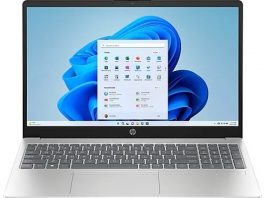
Microsoft has issued security updates to address 90 vulnerabilities, some of which hackers are actively exploiting, in a blog post yesterday. These flaws allow hackers to bypass security features and gain unauthorized access to your PC’s system, highlighting the need to keep your Windows computer updated.
Nine are rated Critical, 80 of the flaws are rated Important, and only one is rated Moderate in severity. In addition, the software giant has patched 36 vulnerabilities in its Edge browser in the past month to avoid issues with its browser. Users will be happy to know that the patches are for six actively exploited zero-days, including CVE-2024-38213. This lets attackers bypass SmartScreen protections but requires the user to open a malicious file. TrendMicro’s Peter Girnus, who discovered and reported the flaw, proposed it could be a workaround for CVE-2023-36025 or CVE-2024-21412 that DarkGate malware operators misused.
“An attacker could leverage this vulnerability by enticing a victim to access a specially crafted file, likely via a phishing email,” Scott Caveza, staff research engineer at Tenable, said about CVE-2024-38200. He said, “Successful exploitation of the vulnerability could result in the victim exposing New Technology Lan Manager (NTLM) hashes to a remote attacker. NTLM hashes could be abused in NTLM relay or pass-the-hash attacks to further an attacker’s foothold into an organization.”
The development has caught the eye of the U.S. Cybersecurity and Infrastructure Security Agency (CISA) to add these Flaws to the Known Exploited Vulnerabilities (KEV) catalog. Federal agencies have until September 3, 2024, to apply these fixes. The update also takes care of a privilege escalation flaw found in the Print Spooler component (CVE-2024-38198, CVSS score:7.8) that gives attackers system privileges.
- CVE-2024-38189 (CVSS score: 8.8) — Microsoft Project Remote Code Execution Vulnerability
- CVE-2024-38178 (CVSS score: 7.5) — Windows Scripting Engine Memory Corruption Vulnerability
- CVE-2024-38193 (CVSS score: 7.8) — Windows Ancillary Function Driver for WinSock Elevation of Privilege Vulnerability
- CVE-2024-38106 (CVSS score: 7.0) — Windows Kernel Elevation of Privilege Vulnerability
- CVE-2024-38107 (CVSS score: 7.8) — Windows Power Dependency Coordinator Elevation of Privilege Vulnerability
- CVE-2024-38213 (CVSS score: 6.5) — Windows Mark of the Web Security Feature Bypass Vulnerability
- CVE-2024-38200 (CVSS score: 7.5) — Microsoft Office Spoofing Vulnerability
- CVE-2024-38199 (CVSS score: 9.8) — Windows Line Printer Daemon (LPD) Service Remote Code Execution Vulnerability
- CVE-2024-21302 (CVSS score: 6.7) — Windows Secure Kernel Mode Elevation of Privilege Vulnerability
- CVE-2024-38202 (CVSS score: 7.3) — Windows Update Stack Elevation of Privilege Vulnerability



